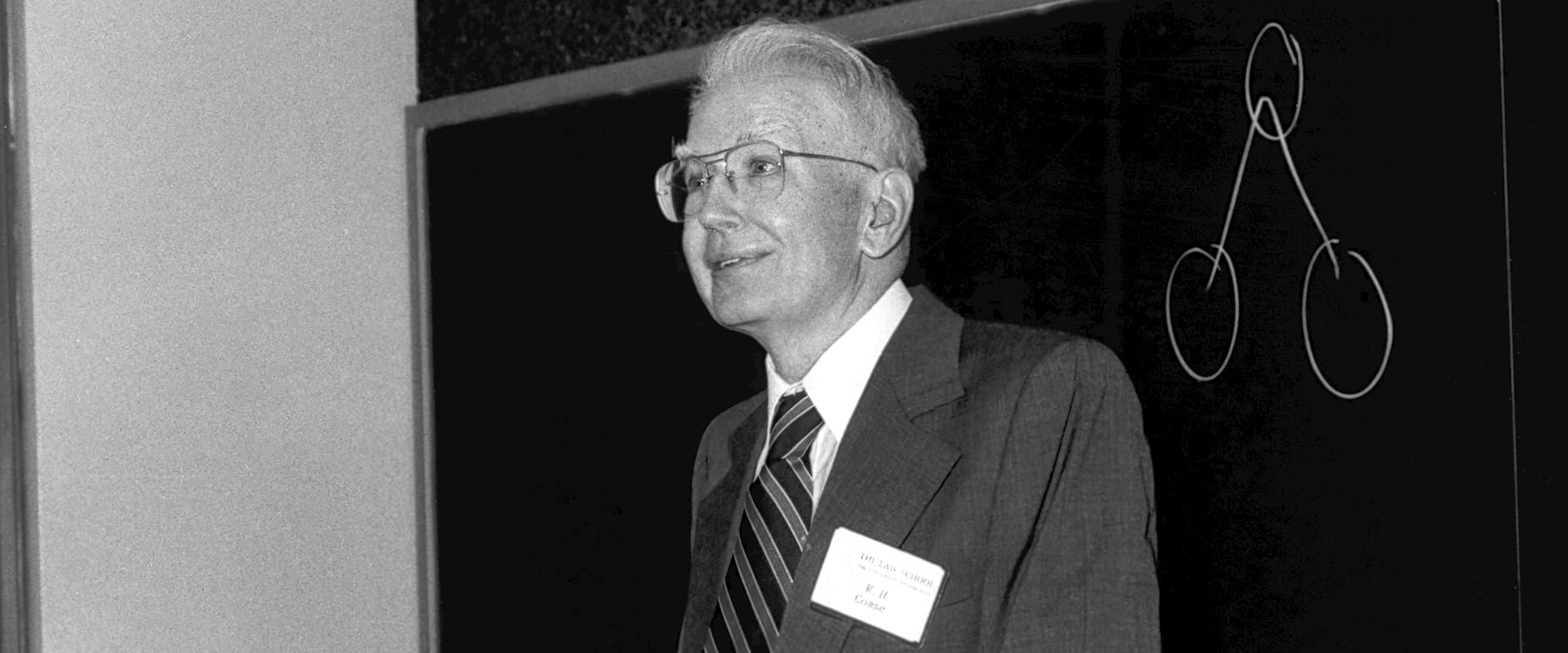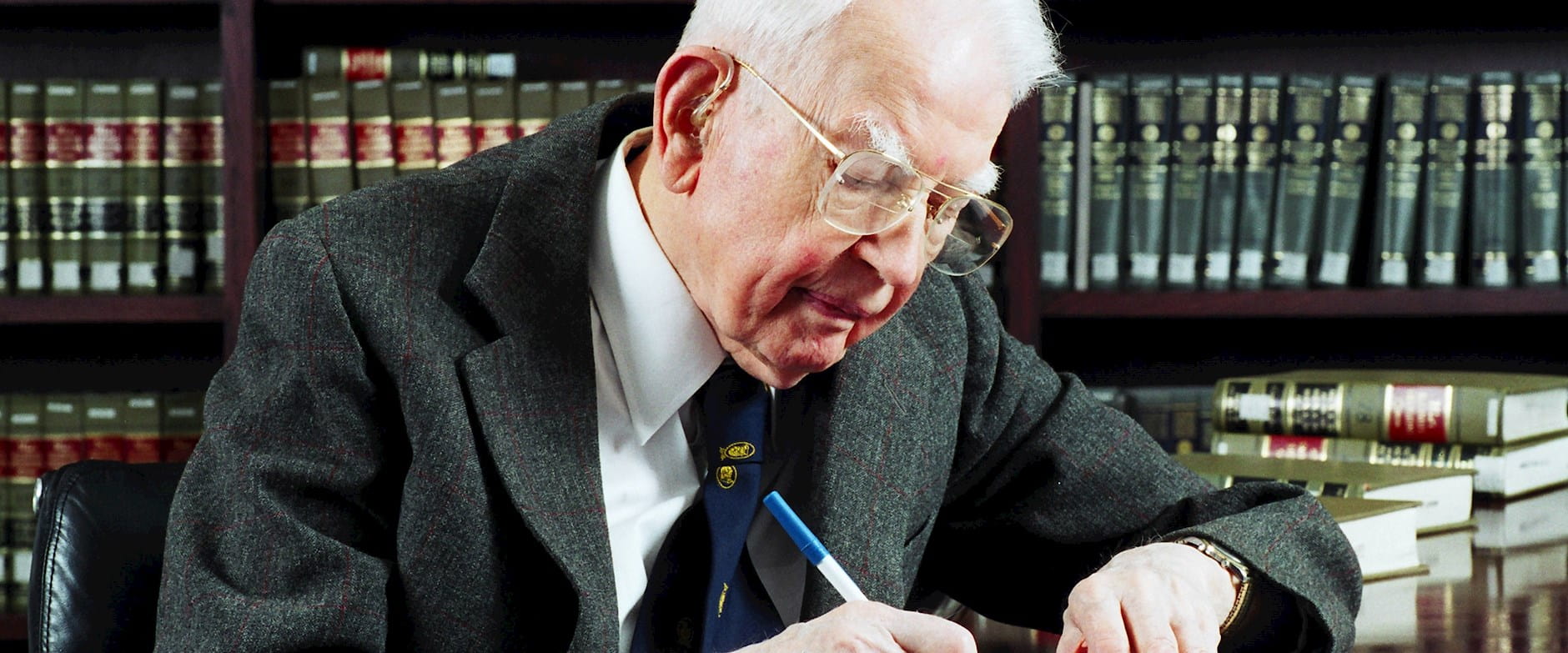
1932
Graduated from the London School of Economics with bachelor of commerce degree
1932

The late Ronald Coase was a pathbreaking economist and legal scholar whose 1937 paper “The Nature of the Firm” established the field of transaction cost economics. In another seminal work, “The Problem of Social Cost,” published in 1961, Coase set out what is now known as the Coase theorem and a new field in economic research, “law and economics.”
Coase was born in 1910 in London. He studied at the London School of Economics, receiving a bachelor of commerce degree in 1932. In 1931 and 1932, he used a scholarship to visit the University of Chicago, where he was strongly influenced by Frank Knight and Jacob Viner, considered two of the founders of the Chicago School of Economics.
In 1951, Coase moved to the United States. After working at the University of Buffalo and the University of Virginia, Coase moved to the University of Chicago in 1964. He became coeditor of the Journal of Law and Economics.
Coase received the Nobel Prize in Economic Sciences in 1991. The Royal Swedish Academy of Sciences stated at the time that Coase “succeeded in specifying principles for explaining the institutional structure of the economy, thereby also making new contributions to our understanding of the way the economy functions. His achievements have provided legal science, economic history and organization theory with powerful impulses and are therefore also highly significant in an interdisciplinary context. . . . Coase’s theories are among the most dynamic forces behind research in economic science and jurisprudence.”
Coase remained a productive scholar for more than 80 years. In 2012, he released a book about the emergence of capitalism in China and Vietnam, How China Became Capitalist, coauthored with Ning Wang. Shortly before his death in 2013, he helped lay the groundwork for a new academic journal, Man and the Economy, which was launched in 2014 and aims to be a general scholarly journal for students of the economy, while accessible and relevant to the concerned public, policymakers, and business and legal professionals.
At his death, Coase earned praise as “one of the most distinguished economists in the world” from Slate and “the greatest of the many great University of Chicago economists” from Forbes.

“A theory is not like an airline or bus timetable. We are not interested simply in the accuracy of its predictions. A theory also serves as a base for thinking. It helps us to understand what is going on by enabling us to organize our thoughts.”
—Ronald Coase


Graduated from the London School of Economics with bachelor of commerce degree
1932
Coase published his influential essay “The Nature of the Firm”
1937
Moved to the US, where he would work at the University of Buffalo and the University of Virginia
1951
Published “The Problem of Social Cost,” which gave rise to the “Coase theorem,” as his friend and colleague George J. Stigler dubbed it
1960
Accepted a position at the University of Chicago
1964
Founded the Ronald Coase Institute to assist young social science scholars around the world to study important economic problems in their own countries
2000
Coauthored How China Became Capitalist, which examines the emergence of capitalism in China.
Coase’s seminal 1937 paper.
The Nature of the FirmCoase’s groundbreaking 1960 paper.
The Problem of Social CostA 2012 conversation with the authors of the book How China Became Capitalist.
How China Became Capitalist: A Conversation between Ronald H. Coase and Ning Wang